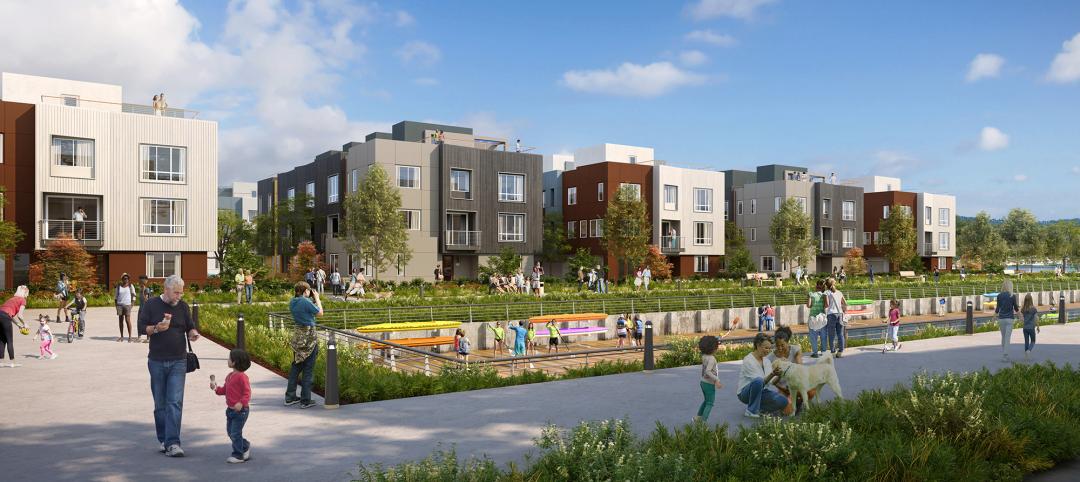With over half a million people in the United States experiencing homelessness, as noted in the U.S. Department of Housing and Urban Development’s 2022 Annual Homeless Assessment Report, the growth of this population outpaces the new supportive transitional housing units being built to serve them. Patterns of regulation in communities across the country have led to a lack of affordable housing, causing a boom in people experiencing homelessness.
KTGY has been privileged to design many communities providing supportive housing for formerly unhoused individuals. Understandably, supportive housing is a sensitive topic that raises the question: how do we balance providing as many homes as possible in a reasonable and respectful way?
Shifting Skid Row: A Supportive Housing Concept
Expanding on the idea of efficiency in repetition and in response to Los Angeles’ ongoing and growing challenge of housing its massive, unhoused population, KTGY’s Research and Development studio designed The Essential, a concept proposing a prototypical 12-story concrete building with steel modular units, housing 335 people and providing essential support services. Fitting within a 100-ft-by-150-ft site, The Essential is designed to flexibly adapt up to 14 different underutilized sites within the Skid Row neighborhood, providing housing and services to the unhoused.

Also known as Central City East, the 50 square blocks of Skid Row have long been home to Los Angelenos with the least. Named for the “skid roads” built to transport logs along muddy streets, Skid Row saw an influx of transient immigrant men arrive in Los Angeles during the mid-19th century. They looked for work building the railroads and spent their earnings on prostitution and liquor. Bars, brothels, and single-room-occupancy units (SROs) popped up to accommodate the new demand.
The Great Depression brought a further influx of single men to Southern California, who were looking for work, but the available work was often seasonal and scarce. As rampant alcoholism and seedy behavior dominated the Skid Row community, local church groups responded by providing food and services through a series of religious missions. By the 1950s, many SRO buildings fell into disrepair. As the city attempted to increase safety code enforcement, many owners demolished their buildings instead of paying for costly updates. Rather than address the deterioration of the urban core, suburban sprawl drew residents away from the city, further burdening commercial interests.
In recent years, new initiatives have strived to revitalize Downtown Los Angeles and spur the development of affordable housing. Unfortunately, even with a renewed sense of priority, the necessary development can’t happen fast enough.
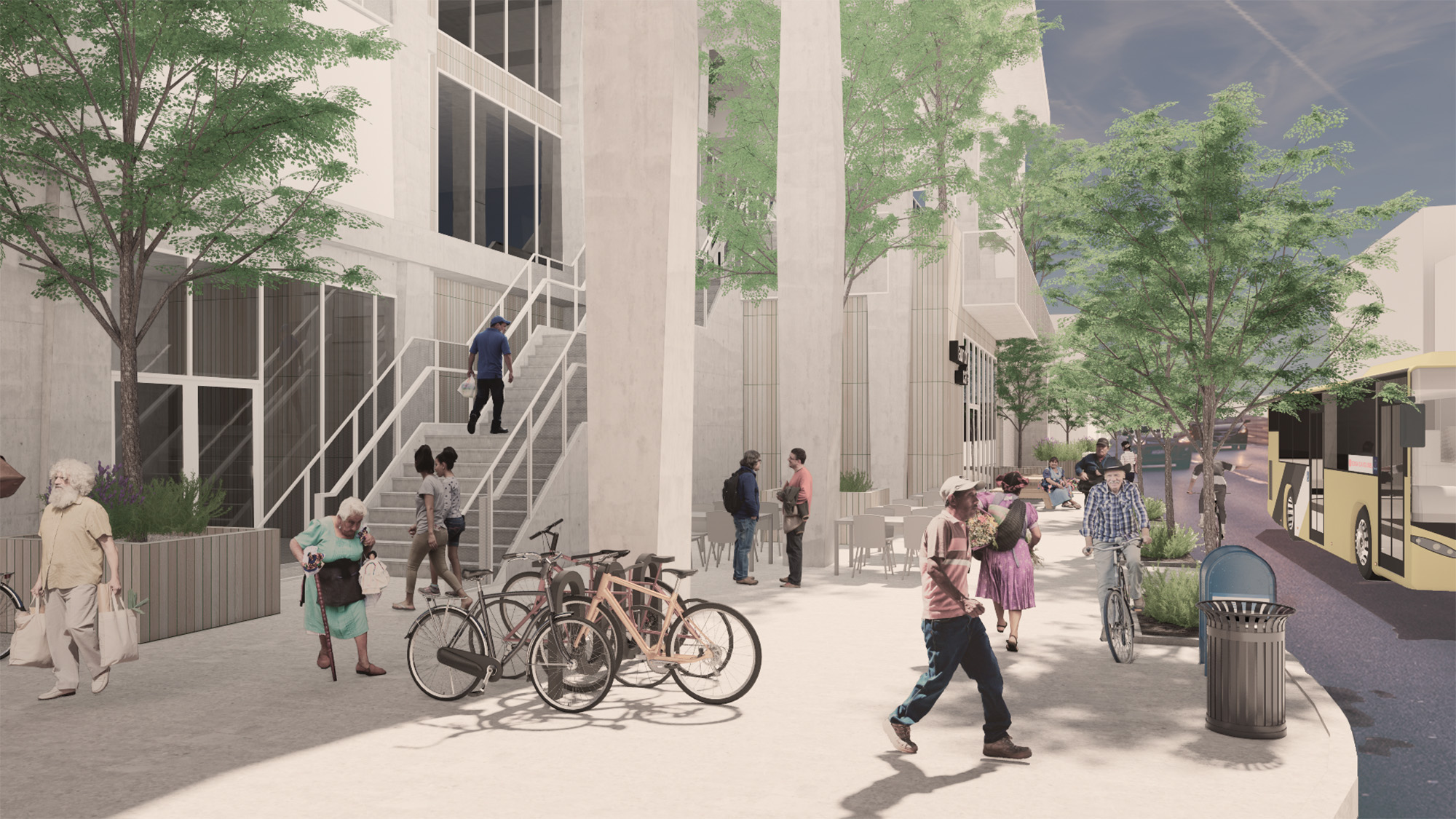
Standardized and Easily Repeatable Design
To make a greater impact on the daunting task of housing the unhoused, a standardized and repeatable approach can streamline the process and reduce timelines. Replication can minimize the number of details created, reduce the time spent reviewing drawings, and mitigate future negative feedback by incorporating lessons learned.
By combining modular design on the upper levels of the building with a prototype strategy for the building as a whole, The Essential suggests a methodology that can generate a larger number of homes in a shorter period of time. While the upper levels remain identical from site to site, the ground level has a flexible design, which can be used on sites where either the long or short dimension faces the public way.
Supporting the Community
The Essential strives to be a support system and community resource. A ground-level plaza serves as an interface between public and private spaces with seating, bike parking, and greenery. A large lobby welcomes new residents and houses a mail room and resident storage areas. The laundry café serves the community while also providing job training and work opportunities for residents.
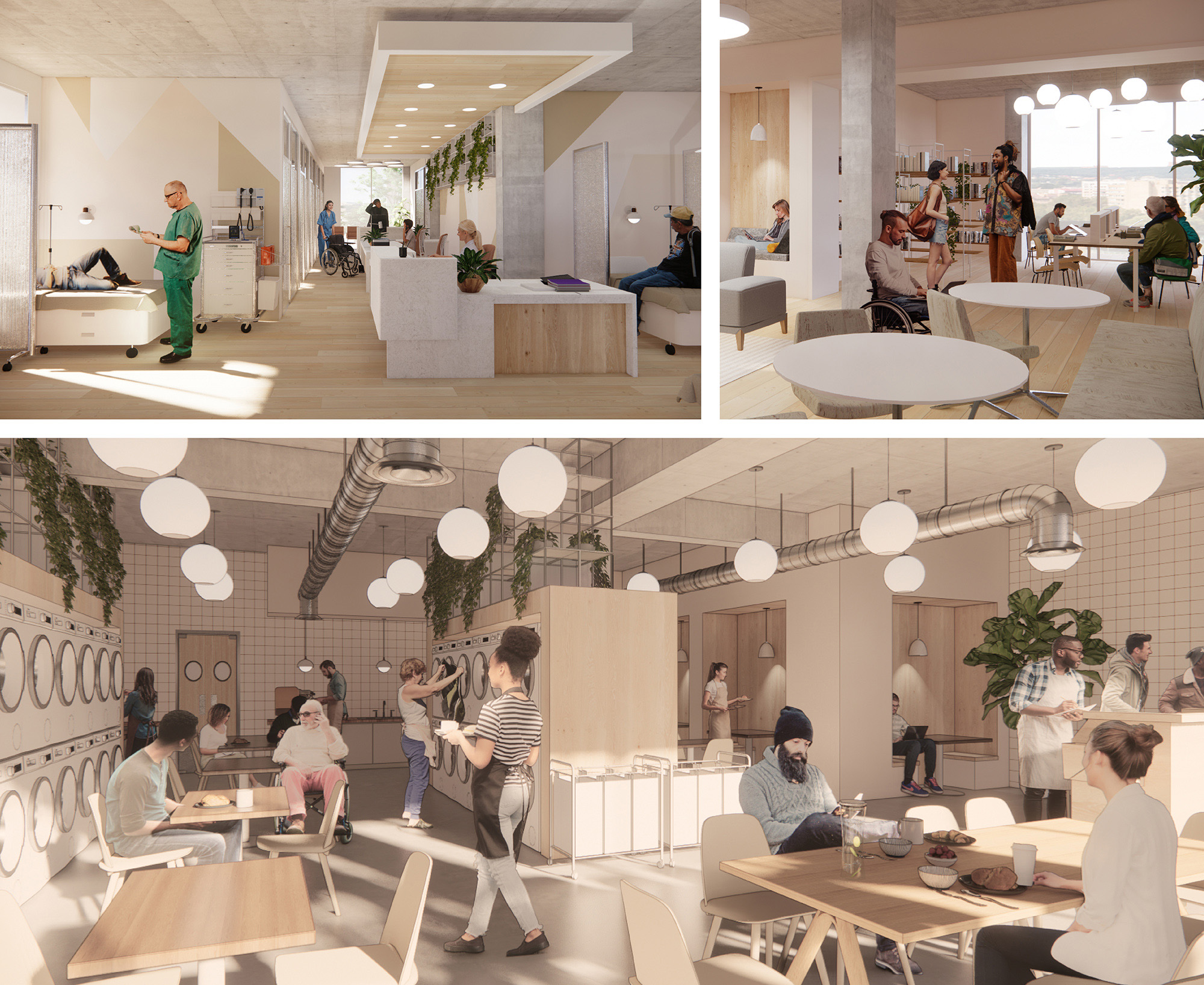
On level two, resident support services include counseling, training, administrative services, recuperative care, and a sobering center. The recuperative care and sobering center include nurses’ stations, 14 patient beds, exam rooms, and isolation rooms. At level three, an elevated plaza offers residents a space to relax and care for their pets. Additionally, the shared spaces on levels one through three provide a safe place for residents to spend time during the day.
Supporting the Individual
On one wing of each residential level, four units house four residents per unit. With sliding doors and multiple configurations, this unit creates levels of privacy and can house singles or couples. On the other wing of the floor, a large, single unit contains six three-bedroom suites. Each suite includes three private bedrooms with a small common seating area and a shared bathroom. The suites also share an oversized kitchen, dining, and living area. On each residential level, resident advocates are available for support, as needed.
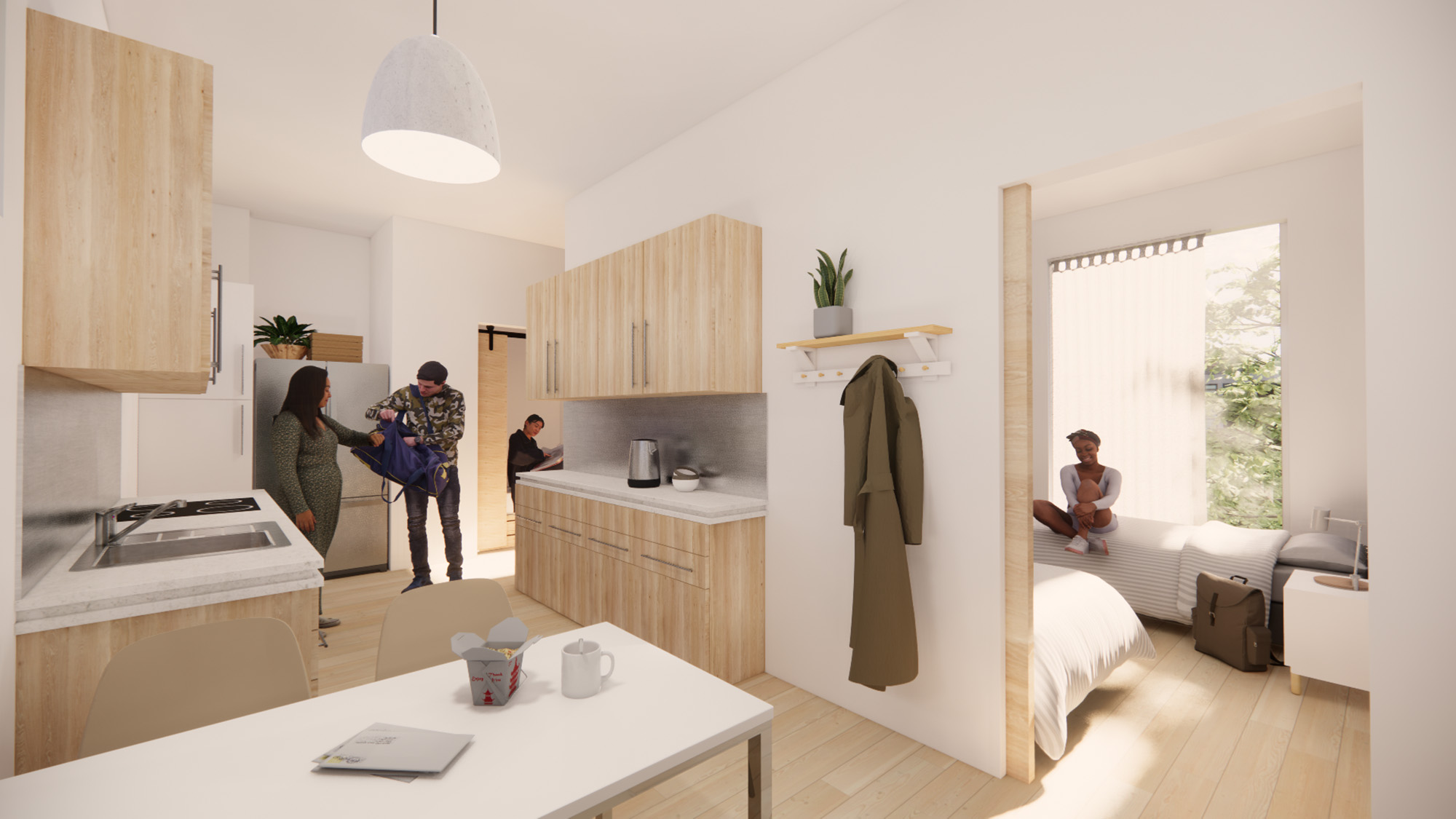
How Do We Support, Supportive Housing?
Homelessness in America has a long and challenging history. The Housing Act of 1937 led to the construction of America’s first public housing, a plan expanded 12 years later. Programs to house the less fortunate continued until 1974, when new government policies ended them. Programs aimed at improving the quality of affordable housing ultimately had the opposite effect, reducing the number of units available. Additionally, the 1980s saw mass closings of mental health facilities, pushing many of their residents to the streets and putting extra strain on an already weak system.
Fearing declines in home values despite evidence to the contrary, neighborhood groups pressure their elected officials to veto new affordable housing developments. When new projects successfully circumvent NIMBY red tape, zoning restrictions often reduce the number of housing units provided and individuals served.
Although the cost of housing America’s unhoused population may seem like an overwhelming drain on taxpayer money, the expense of emergency services for individuals living on the streets ultimately exceeds the cost of subsidized housing. When formerly unhoused individuals can settle into long-term housing, they experience improvements in their mental and physical health and increased employment opportunities, leading to future stability and success.
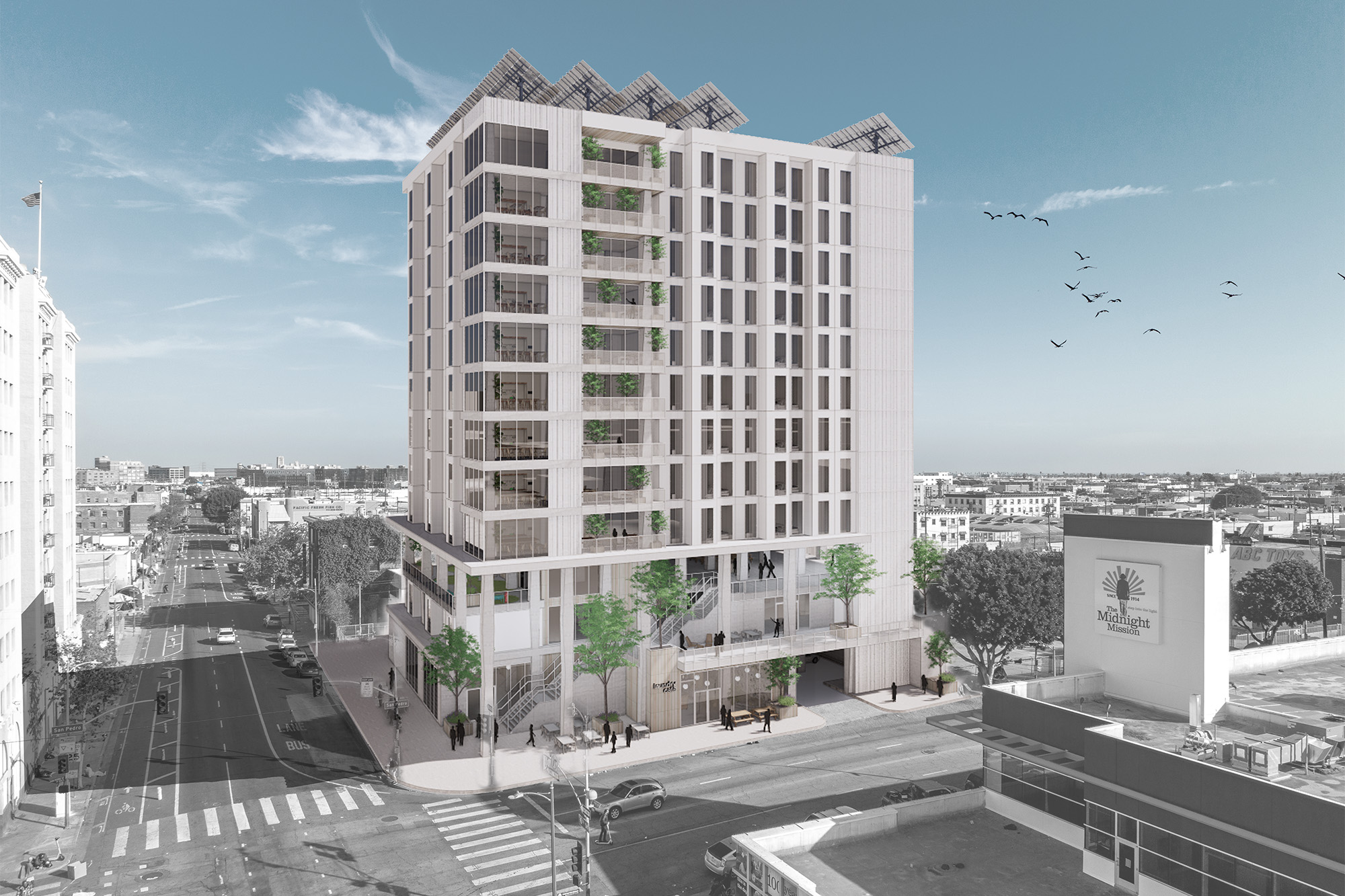
More from Author
KTGY | May 15, 2024
Modular adaptive reuse of parking structure grants future flexibility
The shift away from excessive parking requirements aligns with a broader movement, encouraging development of more sustainable and affordable housing.
KTGY | Apr 13, 2024
Former industrial marina gets adaptive reuse treatment
At its core, adaptive reuse is an active reimagining of the built environment in ways that serve the communities who use it. Successful adaptive reuse uncovers the latent potential in a place and uses it to meet people’s present needs.
KTGY | Apr 8, 2024
3 sustainable design decisions to make early
In her experience as an architect, Megan Valentine AIA, LEED AP, NCARB, WELL AP, Fitwel, Director of Sustainability, KTGY has found three impactful sustainable design decisions: site selection, massing and orientation, and proper window-to-wall ratios.
KTGY | Aug 24, 2023
A multifamily design for multigenerational living
KTGY’s Family Flat concept showcases the benefits of multigenerational living through a multifamily design lens.



